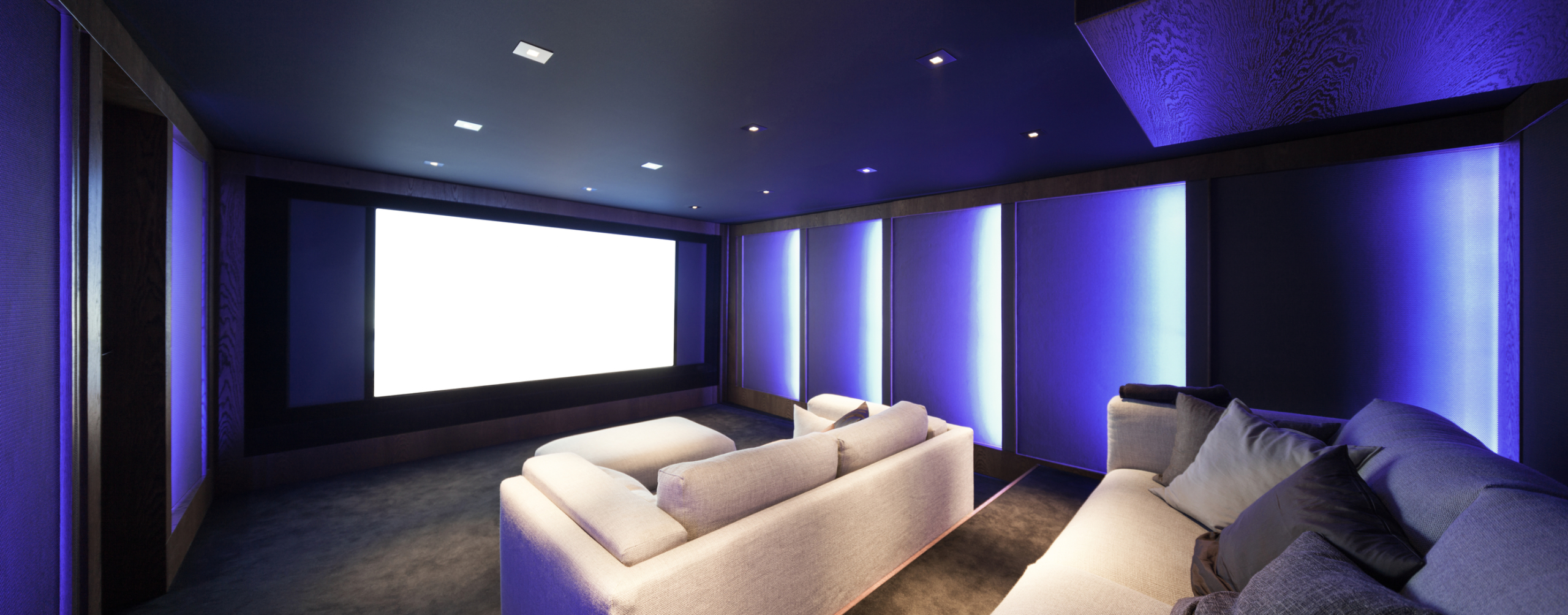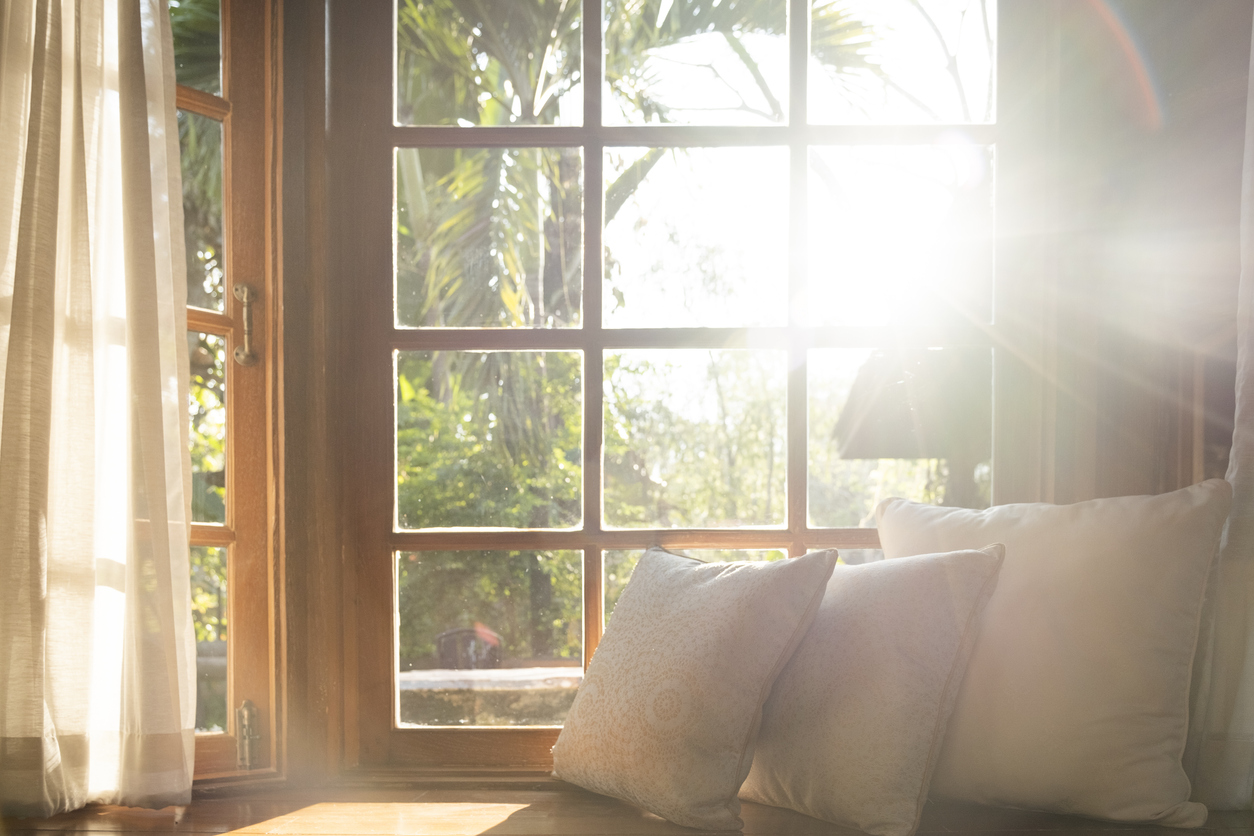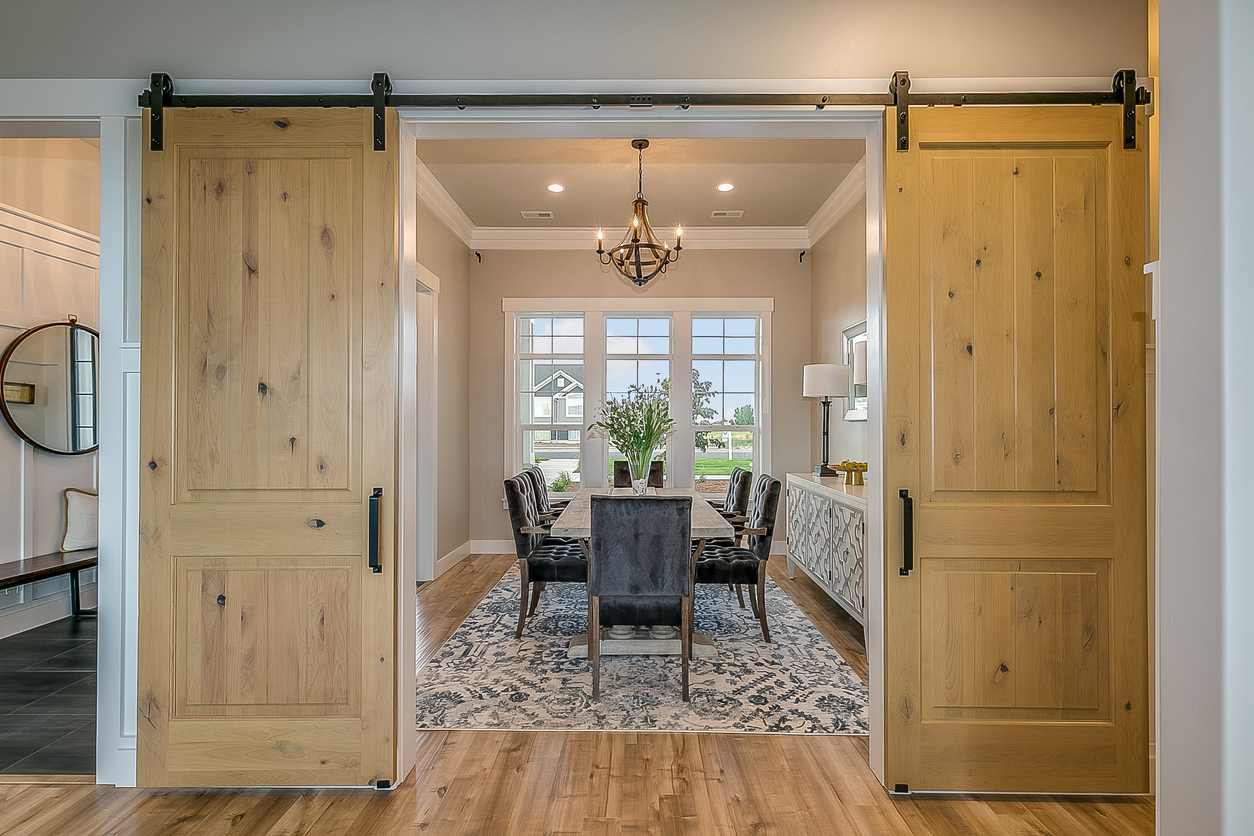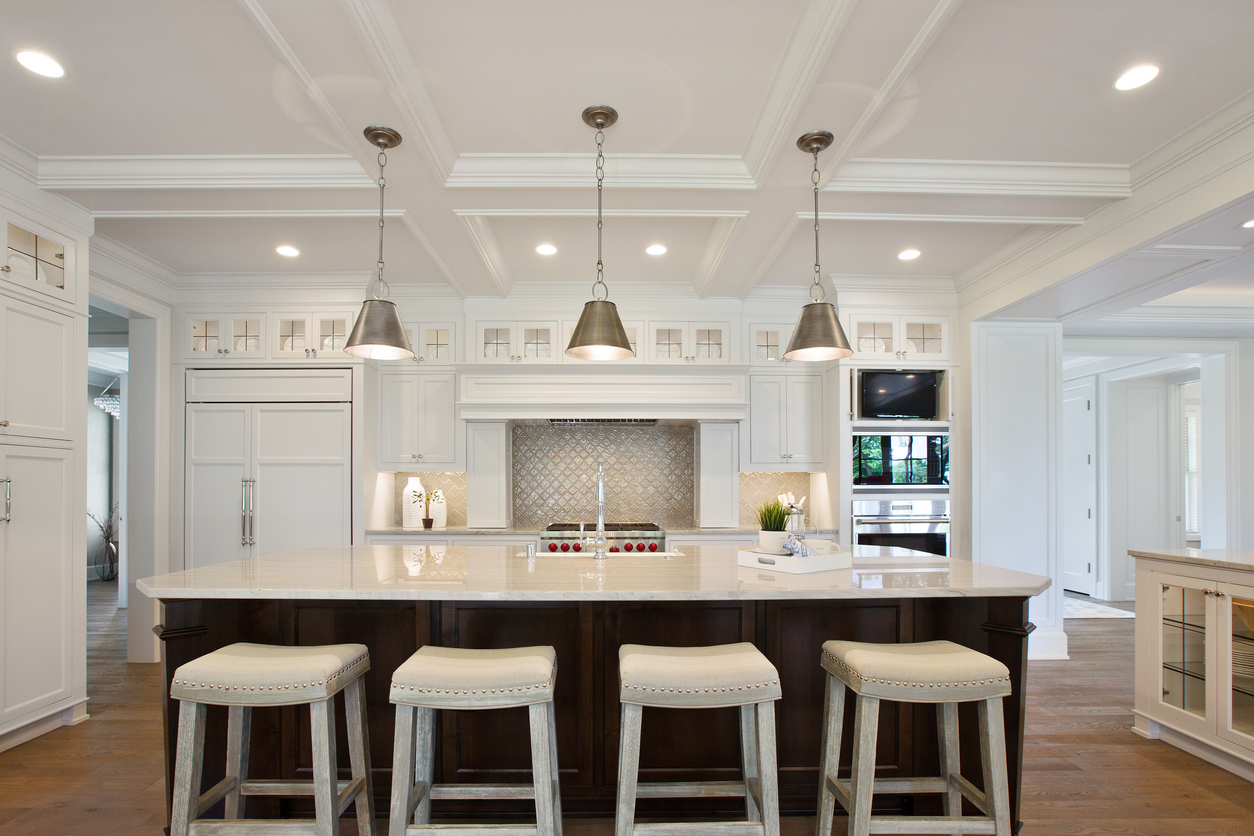While watching a movie, lighting is one of the last things you’re thinking about. In fact, you probably want to have as little light as possible. However, every home theater needs to have several types of lighting in order to function. We recommend a layered approach to lighting for most rooms and the theater is no exception.
General Lighting
Yes, when watching a movie, you want the room dark. What about every other time? You need to have task lighting in your theater room for all other activities. There needs to be plenty of light for when you’re cleaning or using the room when there isn’t a movie playing. Most theater rooms will use recessed lighting for task or general lighting. This type of lighting will illuminate the entire room when needed and it will easily blend into the ceiling in the dark. It often makes sense to wire your lights in different circuits so you can also use them for accent lighting. For example recessed lighting over seating should be separated from recessed lighting over pathways.
Accent Lighting
Before and after you start a movie, you want to have enough light to move around while also setting the right mood. Accent lighting is the best way to achieve this. With accent lighting, you highlight different parts of the room and you keep the room relatively dim. This allows your eyes to adjust as you wait to start the movie. You can get creative with how you use your accent lighting. Many people will choose to use sconces which are often featured in actual movie theaters. You could also use your accent lights to highlight features around the room like movie posters. For an added element of luxury, you can use starfield lighting which turns your ceiling into the night sky or provide a cove around the perimeter for an indirect lighting effect.
Pathway Lighting
This final type of lighting is often neglected when designing a home theater, but it is absolutely essential. If you have stairs or risers in your theater room, you need to have pathway lighting for safety. This type of lighting will indicate any tripping hazards while it’s dark. You can use indirect lights on each step or some dim rope lights under the lip of risers. Just make sure that whatever you choose doesn’t interfere with the movie.
Light plays a big role in your theater room. You want to have a variety of lights so you can accommodate everything that goes on in your home theater. Just make sure you also find ways to block out excess light for when your movie begins.
Working with an architectural lighting consultant can help you plan out your lighting.



